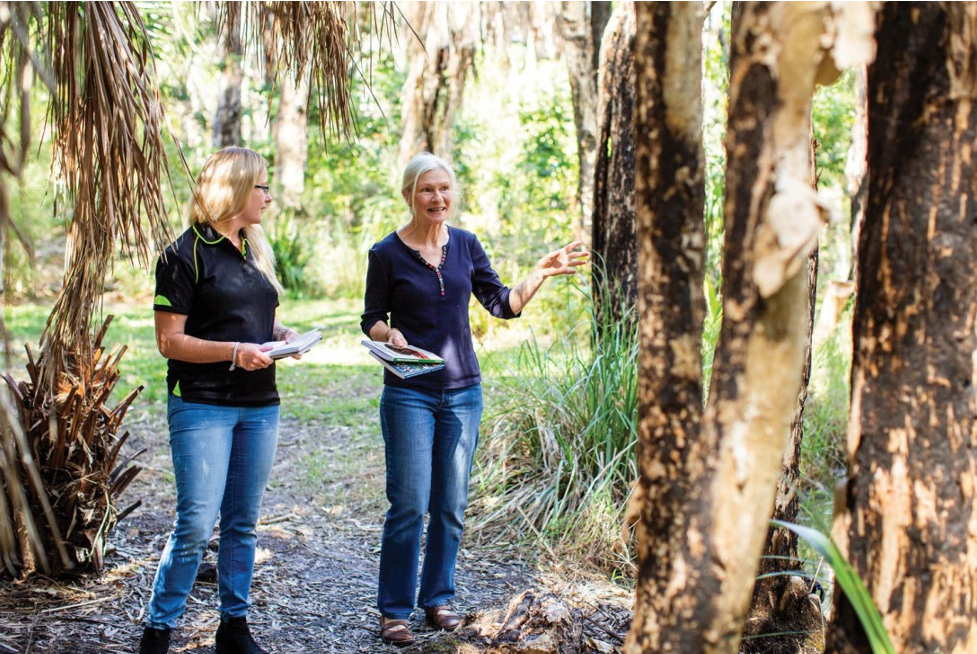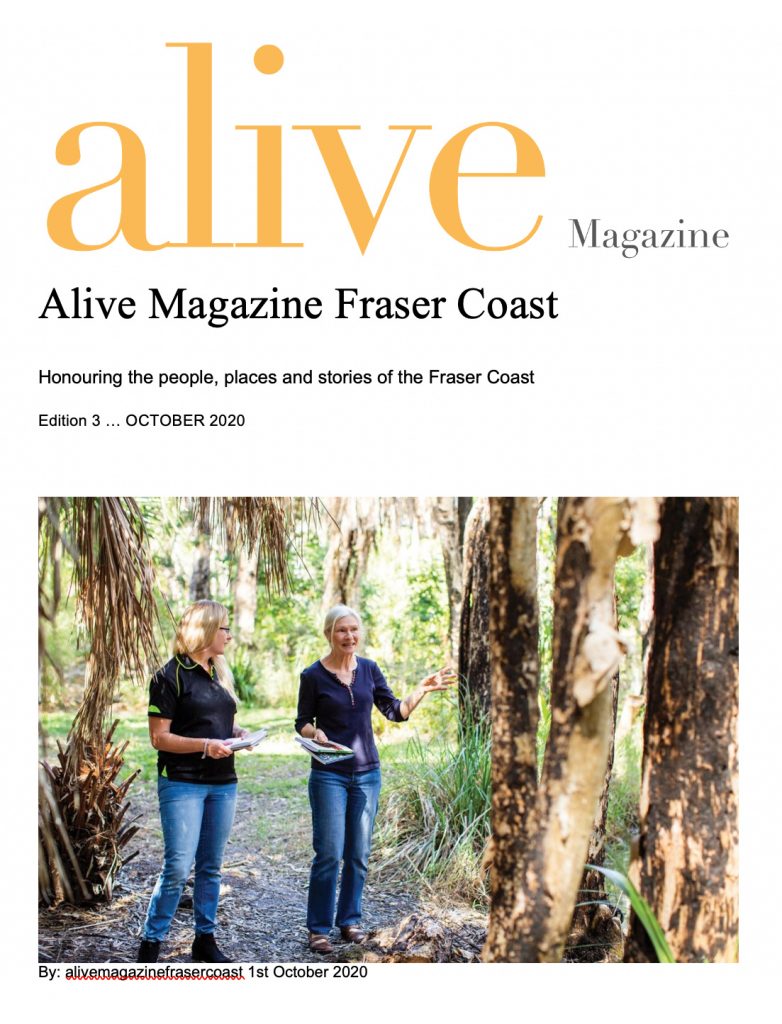
Fraser Coast Alive Magazine Review
We’d like to congratulate the team at Fraser Coast ALIVE Magazine for the great job they are doing – well done! Thank you for including a review of ‘Caring for Australian Wildlife‘ in the October 2020 issue of Alive Magazine.

WILDLIFE DEFENDER PUTS PASSION INTO PRINT
Written by Kerrie Alexander
FROM writing her book twice to looking after over an acre of botanic gardens she calls her backyard; Sharon White is a fierce protector of Australian wildlife.
The Dundowran resident is the author of the book Caring for Australian Wildlife, which – in a major coup for the long-time wildlife carer – was initially published by Australian Geographic in 1997. It has since become a textbook for classrooms and a go-to training manual for wildlife carers around Australia.
Originally from New South Wales, Sharon spent many years training in the field but after moving to Queensland, she found that educational resources were scarce. This is where her dream of putting all her knowledge into print began.
Armed with the determination to make change happen in South East Queensland, Sharon developed and delivered a short course called Caring for Wildlife, which was undertaken by large numbers of students at the Gold Coast TAFE.
“I started doing the course to see if there was anyone interested in wildlife and it was choc-a-block,” Sharon said.
“Every term we would get another large group.”
From there, Sharon collated information from the course handouts and sent it to Australian Geographic who jumped at the chance to publish the book. The following year she was asked to develop an accredited course for TAFE called CAW100, which she delivered to many organisations in Queensland.
With Australian Geographic’s publishing side of the business later being sold to an overseas company, Sharon was asked many times by her followers to self publish a revised edition of the book and 23 years on, she did just that.
After 12 months of fact checking, taking photos, and researching, the book was released in June this year, with Scamp – a female ringtail possum orphan that Sharon rescued – being the cover star.
Sharon said the “go-to guide” is an excellent resource for any Fraser Coast residents who want to learn about local ecology, the importance of natural habitat and practical advice about what to do if you find a sick or injured animal in your yard.
Part one covers how to handle native animals safely, methods of transport, first aid and safe management of captive animals.
Part two covers the rehabilitation of animals and provides detailed information on feeding tables and housing requirements. She said the push to write the revision came after last year’s drought and fires, with carers totally inundated with sick and injured animals.
“This is all about looking after the native animals,” Sharon said.
“People want to help but they don’t know what to do or where to buy the food and housing products, so I decided to get into this again and really try to make a difference.
“I wanted to make it easy for people to be able to help native animals by following a step by step guide in the book and get through by themselves.
“There’s an appendix at the back with all the products so people can find say, milk for a koala or a sugar glider, or food for a bird … it’s all listed.”
But Sharon’s passion for wildlife does not just stop in print. The passionate conservationist and her husband Pete searched high and low about 10 years ago for a perfect patch of land that could be turned into a haven for local fauna.
By chance they came across five acres in Dundowran that was being sold privately by John Eggleston –creator and volunteer at the Botanic Gardens nursery in Urangan.
When the two saw the original Caring for Australian Wildlife book in pride of place on John’s shelf, they knew it was fate. “It took John over two years to find the right people for his property, so when we walked in and saw the book there, we knew it was meant to be.”
The back of the property is one-and-a-half-acres of botanic garden and rainforest, which boasts a variety of over 200 trees and is home to an abundance of bird life, sugar and squirrel gliders, ringtail and brushtail possums, echidnas and much more.
The lagoon spans all the way to the property’s boundary, with islands in the middle being a safe haven for native wildlife and their young. As we walked through the incredible site, Sharon pointed out the variety of insectivorous bat boxes perched high in the trees, the large rock garden created by John and the hand-made name tags placed in front of each lovingly grown tree. Their home is also sustainable.
“When we lived Canungra, also a Land for Wildlife property, we established a plantation of koala food trees. It was rewarding to wake up at night, hear a funny noise and go out and see that there’s a koala and a baby in the tree – it was just wonderful.”
Sharon – an active member of Land for Wildlife and the Wildlife Preservation Society of Queensland, Fraser Coast branch – said it is important for everyone to play their part when it comes to conservation.
Whether it is just planting some trees or installing a bat or possum box, she said every little bit helps.
“Personally, we have seen what happens once you start to plant trees and put boxes up … the animals just come, and they stay and they breed.
“Our native fauna has lived here for thousands of years and we must learn to live with them in our daily lives.
“I have always felt very strongly that we have so many unique native animals in Australia and we really must take care of them.”
